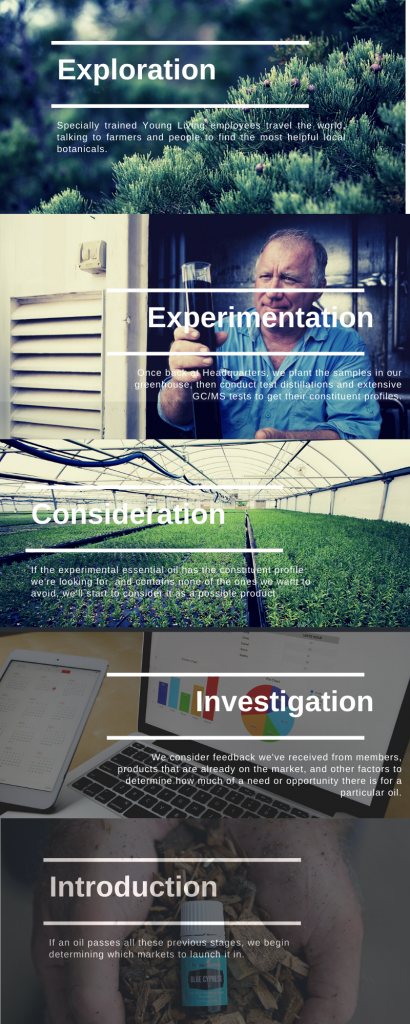How a Young Living Essential Oil is Made: A Plant’s Journey
Gary and Mary often told of their discoveries of various essential oils; Gary’s quest to find true frankincense trees is well-known. What many don’t know is that that process of exploration and discovery continues today at Young Living. Bringing the best, most helpful, most unique products to the people who can most benefit from them still requires a pioneering spirit and an expert eye. Follow the journey we go on to bring you the best products.

Exploration
Specially trained Young Living sourcing experts travel the world with their noses to the ground and their ears to the people, searching for novel aromatics and discovering what plant-based therapies have been most helpful to locals over the years. Sometimes our experts talk with local farmers familiar with the indigenous plants and optimal, sustainable harvesting practices for the area.
Davana was found because our sourcing experts talked to people in India, which is known for its ayurvedic medicine practices. These practices are ancient and traditional but are still being used today. “[Ayurvedic medicine] has commonalties with traditional Chinese medicine and Western medicine,” says Dr. Mike Buch, chief science officer at Young Living, “because it brings some science into the plant-based therapies. If a billion people over a thousand years think something works, it probably does.”
If a plant seems viable as an essential oil, we bring a sample back to our Global Headquarters to experiment and investigate.
Experimentation
Our scientists cultivate and/or prepare the samples in our state-of-the-art greenhouse, then conduct test distillations and extensive GC/MS tests to obtain the constituent profiles of the resulting oils. We look for particular profiles that complement products we already offer. This process is “part science, part art,” according to Dr. Buch. When blue cypress trees, whose needles are green, were first distilled, the oil’s vivid blue color was a surprise to everyone. Its calming aromatic qualities, however, were not.
Consideration
If the experimental essential oil has the constituent profile we’re looking for and contains none of the constituents we want to avoid, we’ll consider it as a possible product.
Investigation
We consider information from many sources when determining whether to add a new oil to our offerings:
- Feedback from members about new products they’d love to have
- Products—ours and others’—that are already on the market
- Scientific information about what the constituents in the oil do
- Market demand
Introduction
If, after all these stages of review, an oil is deemed suitable to introduce to the world, we begin determining which markets to launch it in.
A plant may start in the wild, in a local farmer’s backyard, or somewhere else. It may be hidden in a far corner of the earth. But sooner or later, in our quest to empower the world with nature’s living energy, we’ll find it and do everything we can to make it available to you.


Would you like to share your thoughts?
Your email address will not be published. Required fields are marked *